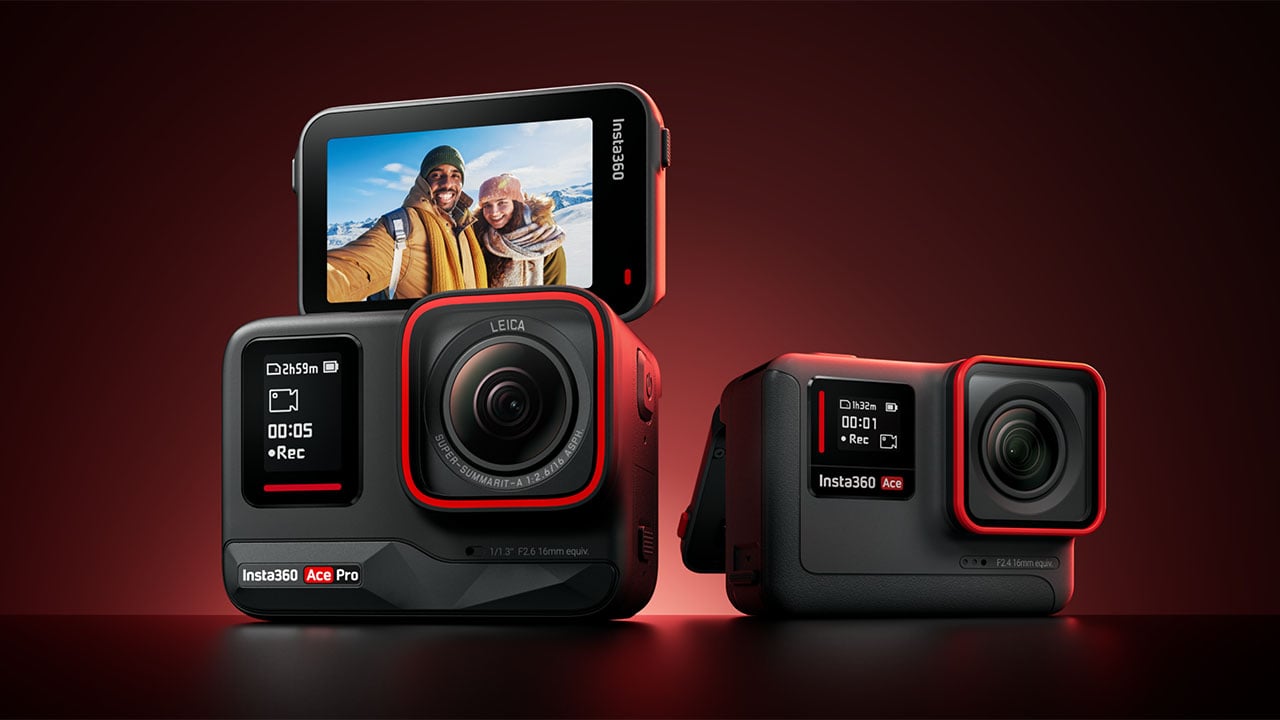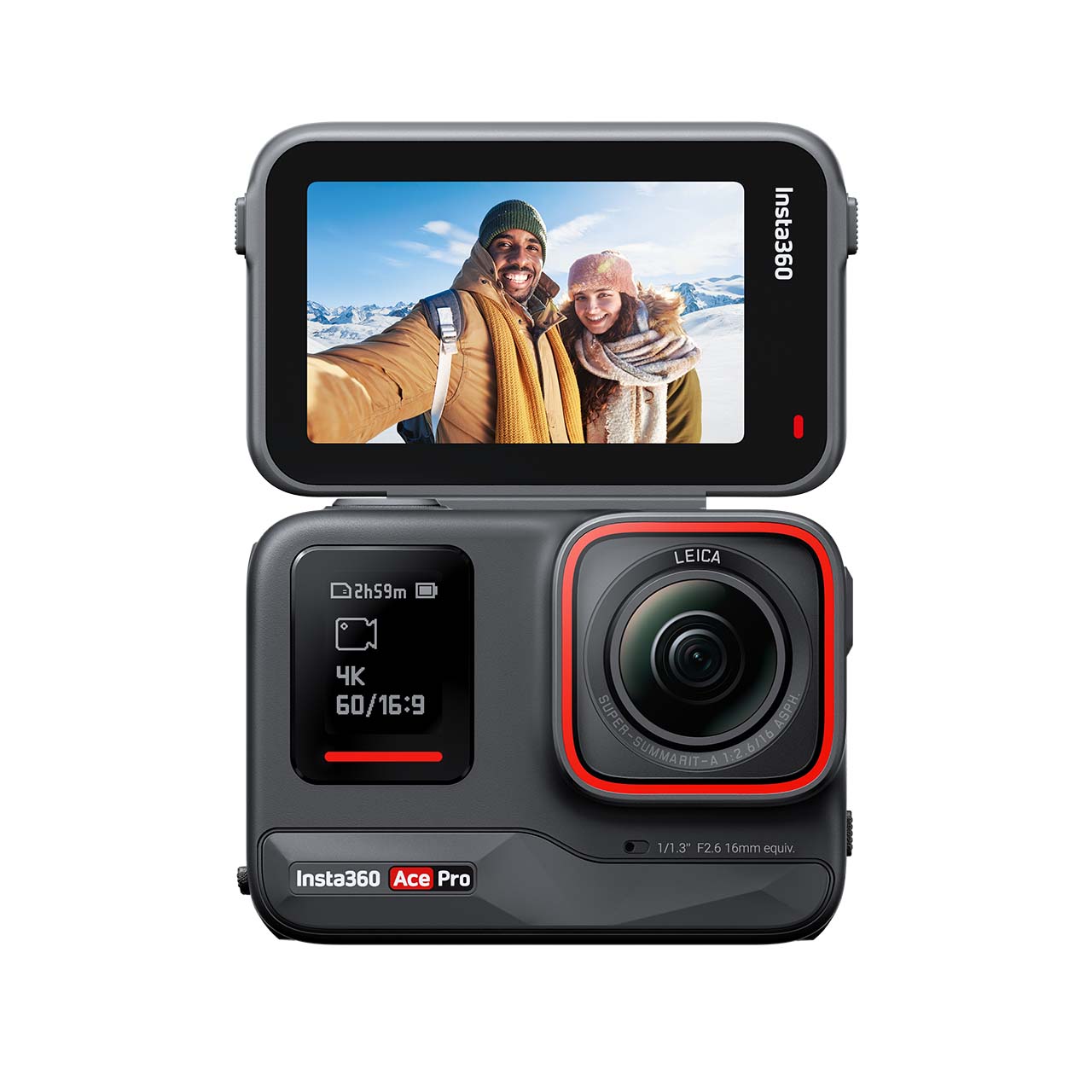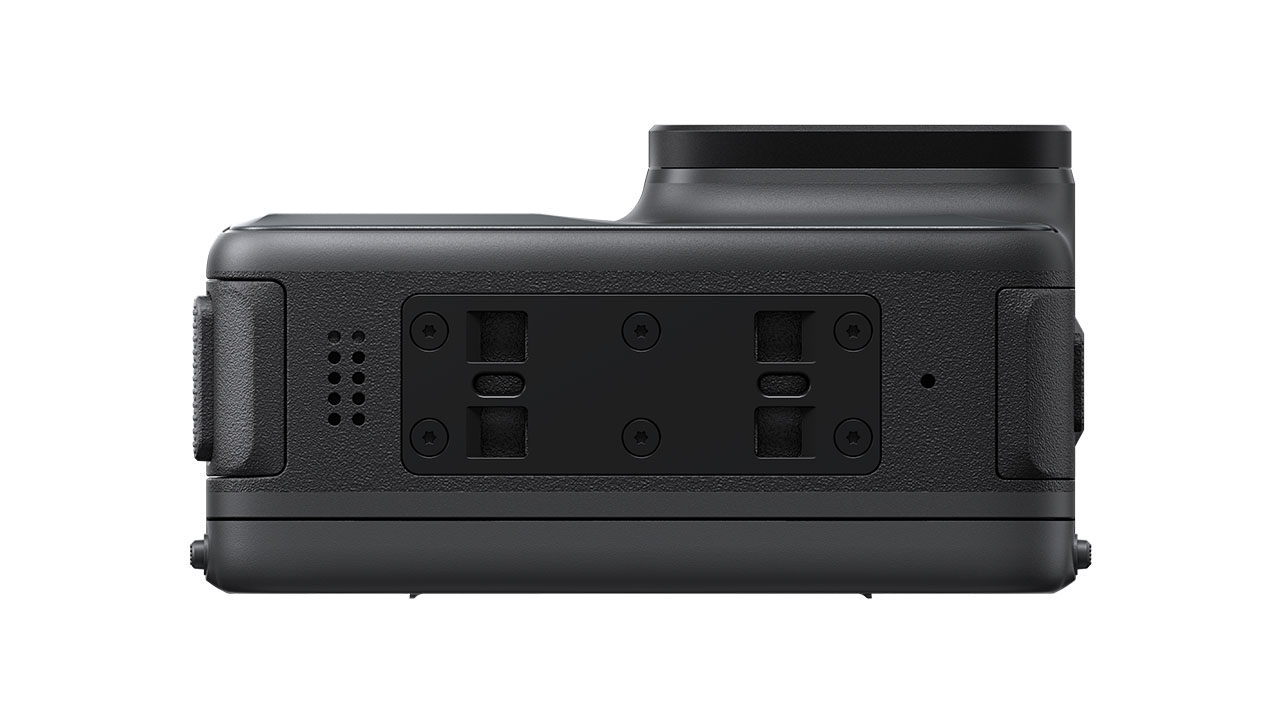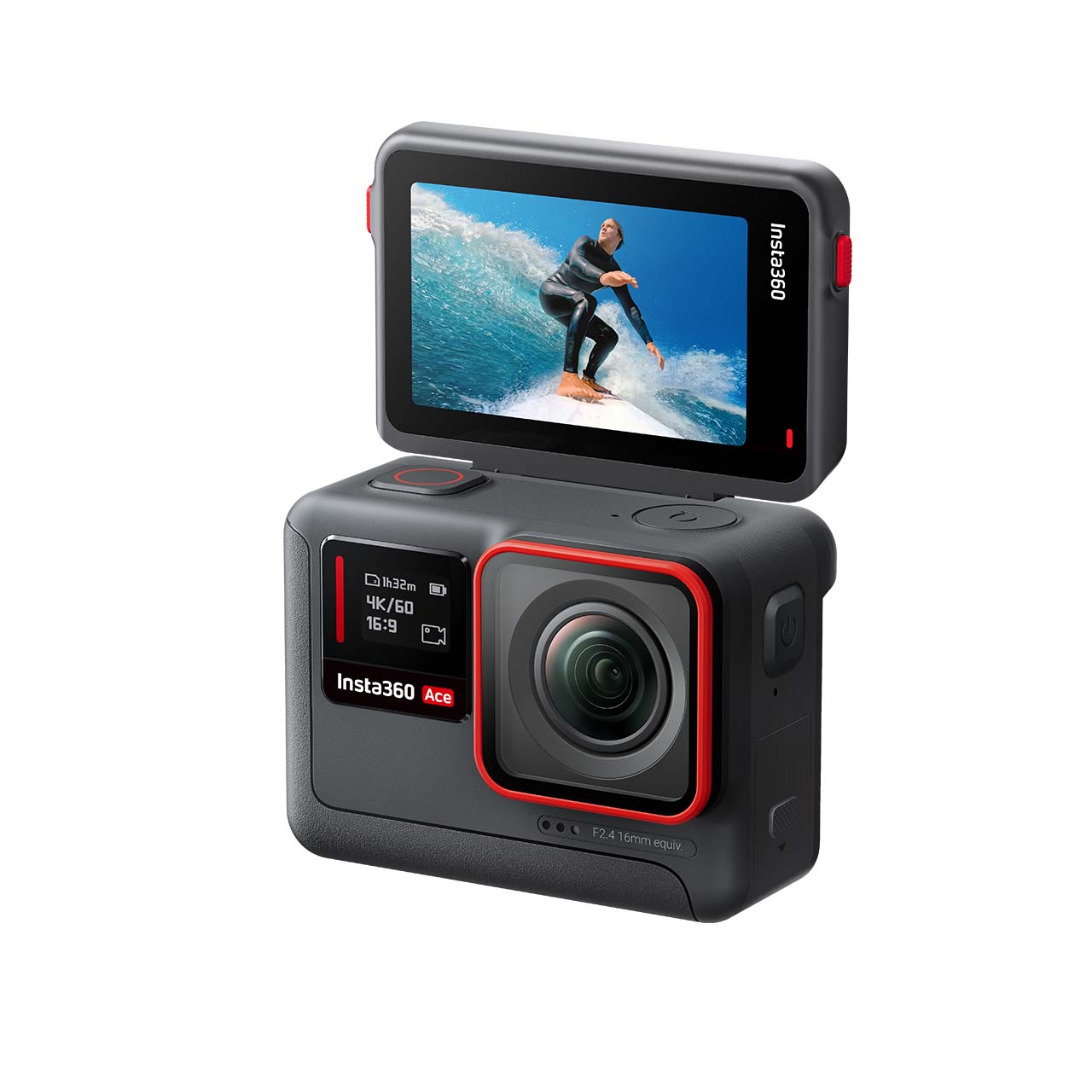
Insta360 has announced two new action cameras, the Ace and the Ace Pro, with the latter capable of full 8K resolution.
The two cameras, named the Ace Pro and the Ace, are Insta360's first true one-piece GoPro style action cameras. Insta360 is better known for its 360 cameras and the tiny GO series of cameras, with the ONE R and ONE RS being the only attempts it has made at rivalling GoPro to date.
The ONE R series was an interesting experiment, with the modular design providing users the ability to move between traditional action camera style configurations and 360 shooting. However, good though they were, the modular design wasn't quite as robust as rivals' products, the non-360 module lenses weren't quite wide enough for effective POV angles.

The Insta360 Ace Pro, showing the flippable 2.4" LCD screen.
The Ace Pro and the Ace are Insta360's first proper foray into truly taking on the might of GoPro, and they appear to have some compelling features going for them.
Ace Pro features
The Ace Pro is the top-of-the-range model, priced at $449.99, and features a 5nm process AI chip that Insta360 claims gives the camera market leading low light performance and HDR contrast handling.
Headline features include a main 16mm (35mm equivalent) lens developed in conjunction with Leica, a 48MP 1/1.3" CMOS sensor, and a large flippable 2.4" rear LCD screen. The Ace Pro is capable of 24p 8K video recording, as well as frame rates of up to 120fps in 16:9 4K modes.

The bottom of the Ace Pro, showing off the magnetic clip mount system.
AI chip
Insta360 is emphasizing the inclusion of a 5nm process 'AI' chip within the camera, which it leverages to produce low noise low light footage in its "Pure Video" mode, as well as a 'lossless' digital 2x zoom function, among other things.
In frame rate modes of 30p and below, the Ace Pro automatically uses a dynamic HDR mode to help preserve shadows and highlights. Another interesting feature is the ability to take a high-resolution photo at the same time as recording video. The photo taken isn't just a video frame grab but one that utilises the full resolution of the chip. Video recording can also be paused and then continued, saving having to create a totally separate video file.
Fast charging is also a feature on the Ace Pro, with an 80% charge being given in 22 minutes with a full charge coming in at around 46 minutes.
The Ace

The budget-conscious Ace camera
The second camera in the range is the Ace. The Ace is for more budget-conscious users who want an easy-to-use camera but still want excellent image quality. The Ace differs from the Ace Pro in that it features an ever so slightly smaller 1/2" CMOS chip recording to 6K resolution maximum. The Ace also lacks the Leica-designed glass that features on the Ace Pro, as well as the fast charging capability.
Both cameras are waterproof without a case down to 10m depth, and both record to either an H.264 or H.265 codec at up to 170Mbps. Taking cues from DJI, the new cameras attach to a newly designed magnetic clip mount system, and from what we've seen so far it might even eclipse DJI's system.
Flexible video modes
As per all previous Insta360 action cameras, it's possible to record the footage with the stabilization and FOV baked in, or users can opt to use the Freeframe video mode, which allows stabilisation and FOV to be chosen later. The main limitation of this is that Freeframe mode throttles the recorded resolution to 4K.
Insta360 is touting the AI features of the cameras heavily, including gesture-based recording control and editing features within the company's mobile app, including selfie stick removal. Both cameras can integrate with Garmin and Apple Watches location features to enable the embedding of speed and GPS data overlays onto edited videos.
We're being spoilt for choice in terms of action cameras now, so competition is high. DJI recently set the bar very high with its Action 4, while GoPro is still holding on as the market leader with the HERO12. Whether the Ace Pro and Ace offer enough to entice users away from GoPro and DJI remains to be seen. We've been putting the Ace Pro through its paces though, so you can expect a full review to hit soon.
The Insta360 Ace Pro and Ace are available worldwide now from the usual sources for $449.99 and $379.99 respectively.


Comments